
~Standards~
The greatest of the medieval flags, the standard was the rallying point for troops in battle. As such, it indicated not the presence of the physical person leading troops, but the office of the leader. Medievally, they were about 8 feet long.
There are definite rules to what was displayed on a standard. In the hoist (the part next to the pole) was the device of the country or overall allegiance of the owner. The remainder of the flag background displayed the owners livery colors, upon which were his principal badges and "motto bends" (diagonal stripes bearing the motto). The standard was also frequently fringed along its entire edge in alternating segments of livery colors.
- Dimensins of Standards
Standard of the Realm - 5' X 20'
Duchy - 4' X 16'
March - 3 ½' X 14'
Earldom - 3' X 12'
Viscounty - 2 ½' X 10'
Barony - 2' X 8'
Closest to what we think of as a modern "flag", the medieval banner was more vertical in shape. Typically, the proportions were approximately 2 units horizontally to three vertically. A medieval banner might also include mutiple tongues from the fly (the end opposite to the pole) or a long tongue from the top edge.
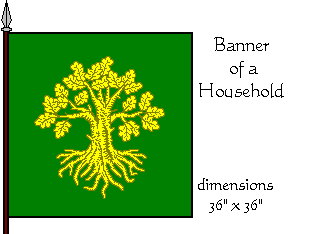
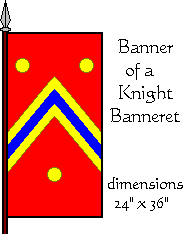
A medium-size flag flown from the head of a spear that is held "at charge" that is, horizontally. Any heraldry or artwork displayed on a pennon is oriented to be viewed in the "at charged" position. Like the banner, the pennon indicated the physical presence of the person who's arms are displayed on it. Knights, Lords and Ladies may fly 18" X 30" lance pennons.
The far right example is called a "pavon pennon".
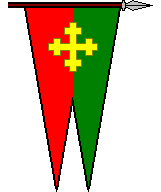
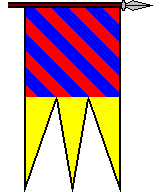
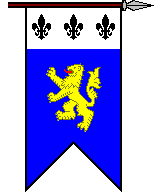
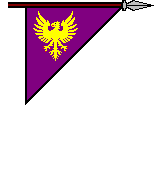
|
|
Standard Disclaimer